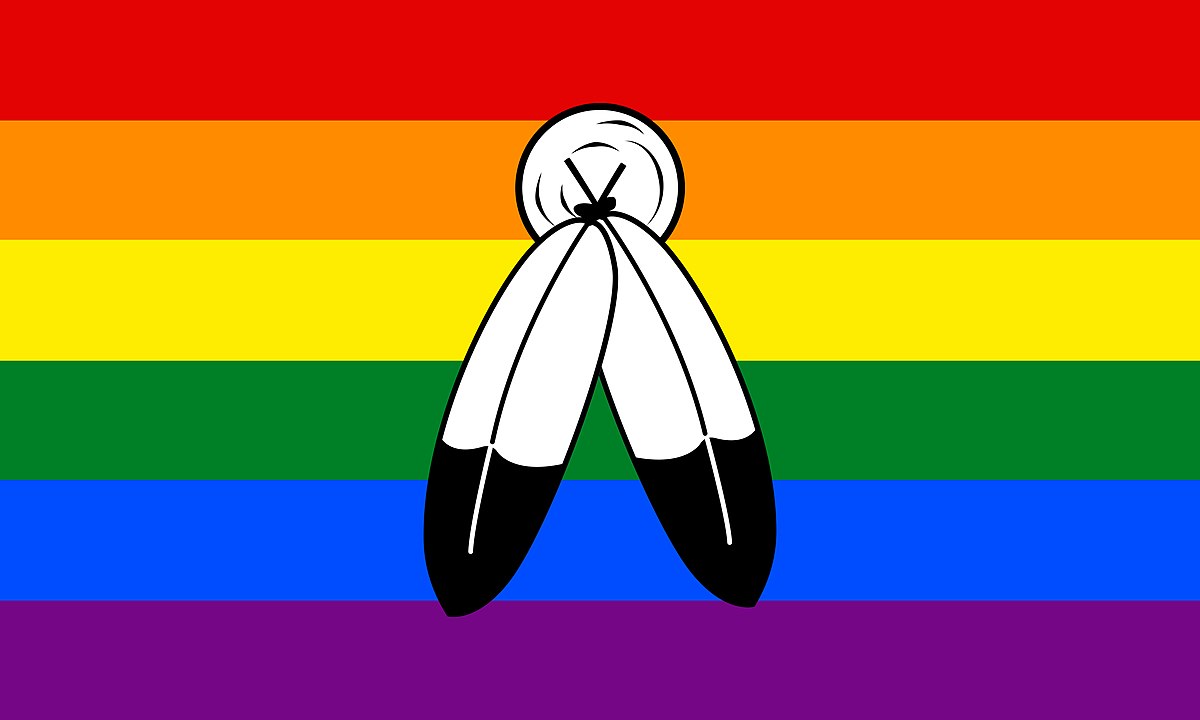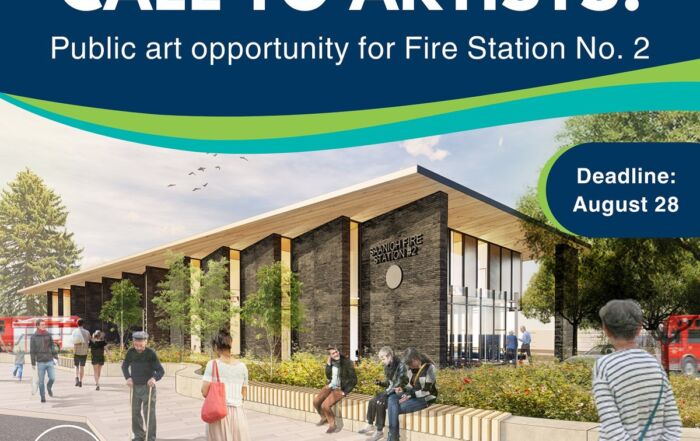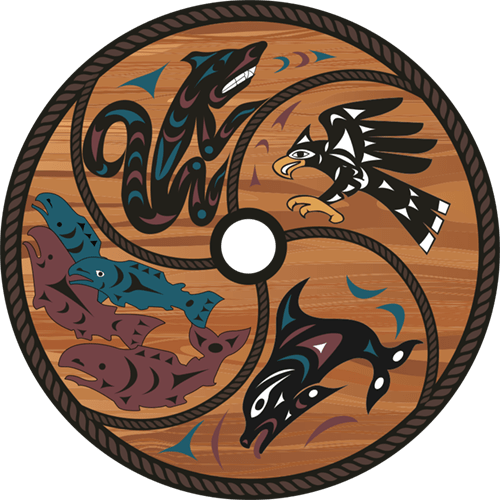The WLC celebrates the 2SLGBTQIA + members of our community during Pride month.

Shown above: the Two-Spirit Flag
No matter how our members identify, or what their sexual orientation is, it’s critical all our members feel included and safe within our community. We recognize the correlation between good holistic health and the freedom to be who you truly are. It is a month to celebrate our friends and relatives who identify as 2SLGBTQIA+
Indeed, there is much evidence to suggest that strict gender roles and heteronormativity are concepts imposed upon us through colonization. Many Indigenous cultures have terms to describe Two-Spirit in their languages, with Two-Spirit often described as a gender in itself. While some interpret Two-Spirit to mean having both masculine and feminine qualities, others define Two-Spirit as having one foot in this world and the other in the spirit world. Two-Spirit can come with important roles and responsibilities and Two-Spirit elders help nurture Two-Spirit children in their sacred roles. Indigenous folks came together to find a way to recognize and uplift Indigenous queer relatives, and the term Two-Spirit has been used ever since.
Joshua Whitehead, an Indigiqueer poet, describes a new term, Indigiqueer,
“I go by both two-spirit and Indigiqueer. One to pay homage to where I come from, from Winnipeg, being kind of the birthplace of two-spirit in 1990. But I also think of Indigiqueer as the forward moving momentum for two-spiritness.”
While most Coast Salish languages do not have a word for Two-Spirit, perhaps this is more evidence of the loss of that word than anything else.
ŚW̱,XELOSELWET (she/her/hers) Tiffany Joseph shares:
“As a queer person, I don’t see strong enforcement of the gender binary, gender roles, or heteronormativity in how I was raised in my communities and culture. ”
Growing up playing on co-ed sports teams, Joseph remembers that working hard and being talented would gain you respect, admiration and acknowledgement, regardless of your gender. She laughs:
“How am I supposed to see myself differently – we all wore the same clothes – a t-shirt and soccer shorts! I’ve always felt accepted. The stories I heard from my parents and hear from my elders today is that whoever was the most capable to do a job in the moment you needed a job done is the person who did it.”
While ŚW̱,XELOSELWET is happy to discuss Pride month with us, she’s also careful to share that Pride has become extremely commercialized, and it can be exclusionary of BIPOC representation. Parades are usually sponsored by corporations invested in extractive industries responsible for causing great harm to Indigenous lands in order to make themselves look progressive. Inidigiqueer and other marginalized queer community members often request an absence of a police presence at Pride parades due to the disproportionate violence they face directly from police officers. It’s important for allies of Indigiqueer community members to understand how disproportionately our trans and non-binary relatives experience police harassment and violence. The absence of a police presence at pride means BIPOC, trans, and non-binary relatives can feel safe and included in Pride gatherings.
She reminds us that for Indigenous youth coming out or being openly queer or non-binary can be associated with increased risk of discrimination and danger. When contemplating one’s sexual orientation or gender, they will also have to weigh whether they will face discrimination from their family or discrimination from a predominantly white Queer community. Settler racism and cultural appropriation of the Queer BIPOC community is exemplified perfectly by Madonna’s Vogue album. Vogueing originated from Drag Ballrooms in America, which were predominantly BIPOC spaces. The Drag Ballroom community kept Queer BIPOC folks safe from the discriminations they faced and allowed for freedom of expression. Madonna increased her wealth and fame, but BIPOC queer and trans community are still facing societal inequities that need to be addressed by all communities.
Tiffany explains:
“What we consume; music, fashion, dancing. Even the words we use to wittily criticize someone, we get all of that from Black women* and Indigenous women* from Drag balls to beading circles.”
Some people will choose their culture over sharing and expressing their true gender and sexual orientation. ŚW̱,XELOSELWET wants any Indigenous youth questioning their sexual orientation to know,
“When I connect with our cultural leaders in community and they know that I’m Indigiqueer, they make sure I know that I’m accepted as I am. We have a very accepting culture and society, and that comes from our teachings. They know how people sometimes get kicked out of their home, or mistreated because of homophobia, but they want me to know they accept me. It’s important to let people “come out” at their own pace. But, I want you to know you’ll be able to find acceptance. There’s also queer allies who will respect your culture and value your safety. I’ve been happy to see the ways, big and small, that our community is showing acceptance of Two-Spirit and Indigiqueer community members. I want to have our own Pride parade, right down West Saanich Road. Where we can be sure the people in our community can stay safe and be celebrated as their true selves.”
*Note: the term “women” includes trans women.
Definitions to help folks understand potentially new terminology
2SLGBTQIA+ = Two-Spirit, Lesbian, Gay, Bisexual, Transgender, Queer, Intersex, Asexual, + (the plus includes more identities)
BIPOC = Black, Indigenous, People of Colour
Queer = identities that do not conform to gender norms or heterosexuality
Heteronormativity = a world view that promotes heterosexuality as the normal or preferred sexual orientation
Gender variant = gender that doesn’t fall within masculine and feminine gender norms, examples include non-binary, transgender, and more
Indigiqueer = An Indigenous person who may be of queer sexual orientation, or who identify within a gender gradient, may also identify as Two-Spirit
Intersex = is a person is born with a combination of male and female biological traits
Asexual = a person who experiences little or no sexual attraction to anyone, asexuality is also a spectrum, and that spectrum includes demisexuality, which is when someone must feel an emotional bond with someone before they can feel sexually attracted to a person.
Pronouns = pronouns include “she/her/hers” and “he/him/his” and “they/them” and more, combinations of pronouns such as “she/they” or “he/they”
To stay up to date on stories like these, subscribe to our newsletter.
Want to stay on top of news and events from the WLC? Sign up for our newsletter or follow us on Social Media





